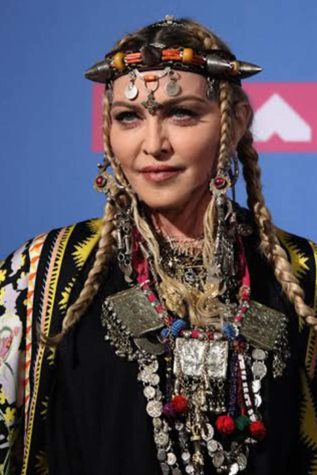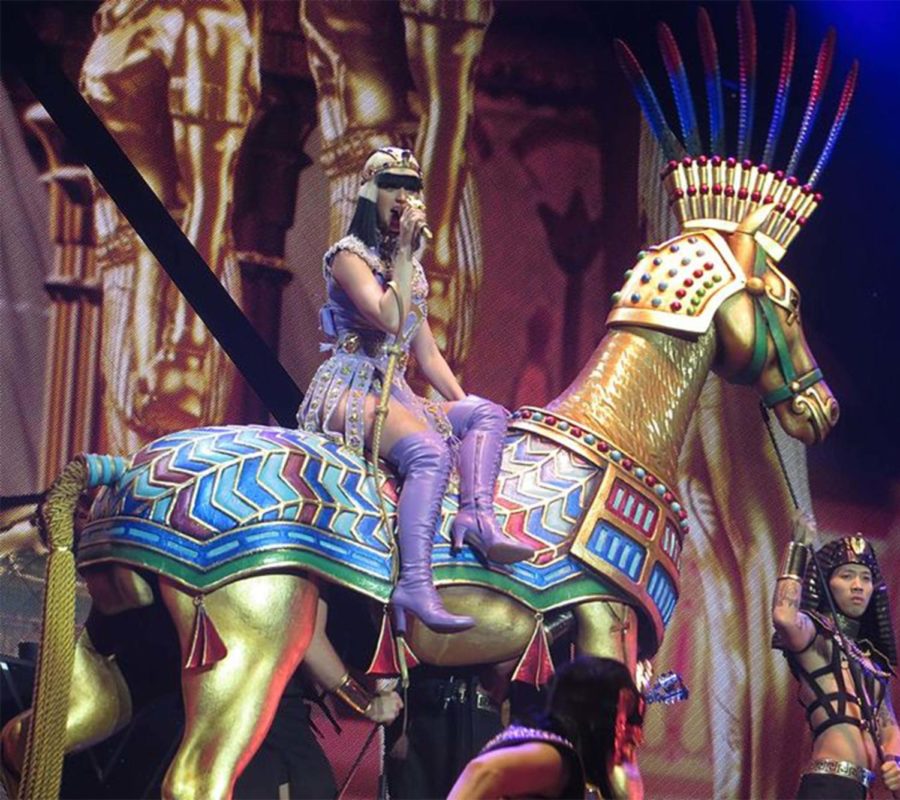The Fine Line Between Cultural Appropriation and Appreciation
The line between cultural appropriation and appreciation is thin and definitely not straight.
PHOTO | Wikimedia
Katy Perry performs ‘Dark Horse’ on the “The Prismatic World Tour.” She’s appreciating Egyptian culture because the costumes and accesosories used were accurate representations of said culture.
My hair. It is untamed. It is a big part of who I am because it has affected the way I present myself to the world. I have spent my life subjected to belittlement by my peers who ask curiously, ‘Why is your hair so poofy?’, ‘Can you straighten it?’, ‘You should get this hairstyle instead.’. This and the constant fingers lingering through my kinky curls at a young age made me feel different and like I was lesser than. I’m surrounded by other Black people who wear cornrows, dreads and braids to make their hair more manageable. As I’ve grown older I’ve begun to appreciate and embrace my natural hair instead of conforming to what society thinks it should look like. So this is why, when I scroll through my social media feed to see non-Black people wearing Afro-centric hairstyles and are gaining praise from it while I and others from my race are called ‘dirty’ and ‘ghetto,’ I am reminded of the systemic privilege that plagues our society.

Madonna poses for photos in the press room for the 2018 MTV VMAs on Monday, Aug. 20, 2018, at Radio City Music Hall in New York City, N.Y. (Nancy Kaszerman/Zuma Press/TNS)
Matters involving cultural appropriation are omnipresent in America today. Cultural appropriation is destructive due to its extension of centuries of racism, oppression and disenfranchisement. The opposition of cultural appropriation stands on the fallacy that race relations exist on a level playing field, as though racism has been extinguished.
An example of this can be found in the National Football League’s Washington Redskins whose logo presents a Native American man in a traditional headdress. The team sells feather headdresses, foam tomahawks, faux Indian clothing and containers of paint meant to be worn in imitation of Native American war paint, which together are inaccurate and negative depictions of Native Americans. Because Native Americans are such an underrepresented community, we have brushed under the rug the blatant ethnic stereotyping and racial slurs that are connected with this logo, which in turn leads further defamation and marginalization of their race and culture.
Misrepresentations like these are also found in Halloween costumes. This includes but is not limited to Blackface, sombreros and ponchos and the fusing of East Asian culture. This is most often seen in performances such as Nicki Minaj’s ‘Chun Li’ on Saturday Night Live earlier this year. She began her performance in a kimono-style garment, shedding it to reveal a body-armor-type of bodysuit that was half Chinese and half traditional Japanese samurai armor. This blending of Chinese and Japanese culture is bad enough, but Minaj also sexualizes these two cultures in the process. Intentionally or not, she demeaned something meaningful or traditionally associated with the ethnic groups in question.
Ideally, the majority of people dressing up in costumes are well-intentioned. Most are making an attempt to show admiration but receive negative backlash because they crossed a line they didn’t know was there. This could be avoided by simply asking someone from that culture, ‘Does my costume come off as offensive?’. It is imperative to have a dialogue on what is appropriate and what is not because it will inevitably help to foster a more conscious America.
Cultural appreciation is when elements of a culture are used while honoring the source they came from. It’s one thing to bring back jewelry from a country you visited where you experienced the traditions and rituals performed and another to style your hair in cornrows because you saw a celebrity do it. It takes some personal interaction in some form to truly comprehend and appreciate someone’s lifestyle. To give an example, if you get henna before a music festival with the sole purpose of looking cute, then you are appropriating South Asian culture. But if you are getting it done in a way that honors the traditions associated with this body art, then you are appreciating it.
That said, respect is the most important part in distinguishing the line between cultural appropriation and appreciation. We are not at a point in time where we uphold the dignity of each individual. We continually stereotype people because of what they look like and those are the ones who get belittled on a day to day basis and are frowned upon by their white counterparts. Martin Luther King Jr. once said, “Nothing in all the world is more dangerous than sincere ignorance and conscientious stupidity.” Our inability to acknowledge and accept this pressing fact shows how far this country has come and how much farther it needs to go.
Cultural Appreciation is the goal but cultural appropriation is the reality. We need to begin to take the time to understand, respect and embrace people’s differences. Thus, when contemplating costumes for this Halloween season, instead of putting on what you think will get the most laughs or likes, put yourself in someone else’s shoes figuratively before you do so literally.



